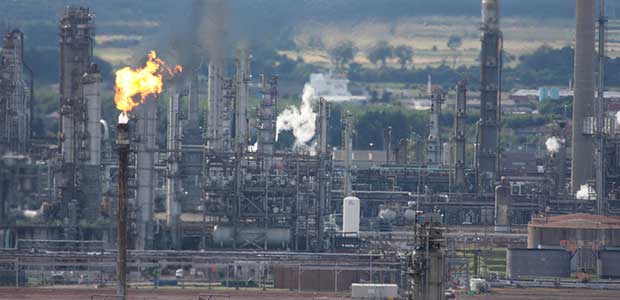
LyondellBasell Companies Agree to Reduce Harmful Air Pollution
The company will cut flaring at six U.S. chemical plants in Texas and Iowa to reduce harmful air pollution.
Chemical giant LyondellBasell has agreed to make upgrades and perform compliance measures estimated to cost $50 million to resolve allegations they violated the Clean Air Act and state pollution control laws at six petrochemical manufacturing facilities located in Texas and Iowa. The settlement, announced on October 15, will eliminate thousands of tons of air pollution from flares.
According to the complaint, the chemical plants failed to properly operate and monitor their industrial flares, which resulted in excess emissions of harmful air pollution. Lyondell’s subsidiaries regularly “overstated” the flares at their facilities and failed to comply with other key operating constraints to ensure the volatile organic compounds and hazardous air pollutants contained in the gasses routed to the flats are effectively combusted, according to a press release.
“This settlement will require LyondellBasel to install pollution control and emissions monitoring equipment at six facilities in Texas and Iowa, reducing emissions of greenhouse gases and other harmful gases by thousands of tons per year,” said Acting Assistant Administrator Larry Starfield for EPA’s Office of Enforcement and Compliance Assurance. “Those controls, plus a requirement for fence line monitoring of benzene emissions, will result in significant benefits for the local communities in Texas and Iowa.”
Once fully implemented, the pollution controls are estimated to reduce emissions of climate-change-causing greenhouse gases, including CO2, methane, and ethane, by almost 92,000 tons per year. The settlement is also expected to reduce emissions of ozone-forming VOCs by almost 2,700 tons per year and of toxic air pollutants, including benzene, by nearly 400 tons per year.
Lyondell will also perform air quality monitoring that is designed to detect the presence of benzene at the fence lines of the six covered plants. Monitoring results must be publicly posted, providing the neighboring communities with more information about their air quality. The monitoring requirements also include triggers for root cause analysis and corrective actions if fence line emissions exceed certain thresholds. Flare compliance is an ongoing priority for EPA under its National Air Toxics Initiative.
“The Justice Department and EPA will continue to enforce the law against petrochemical plants that violate the Clean Air Act,” said Assistant Attorney General Todd Kim of the Justice Department’s Environment and Natural Resources Division. “In particular, we are committed to reducing harmful air pollution from unnecessary and improper flaring, especially near overburdened communities with environmental justice concerns.”